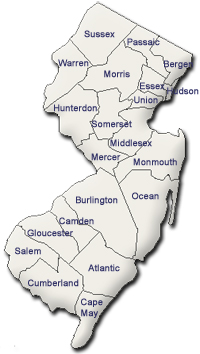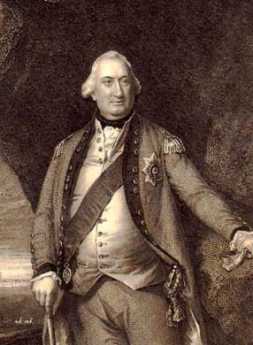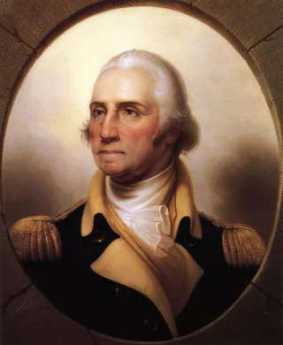Related Topics
The British Attack Philadelphia
Fighting in the Revolutionary War lasted eight years; for two years (June 1776 to June 1778) Philadelphia was the main military objective of the British.
New Jersey (State of)
 The Garden State really has two different states of mind. The motto is Liberty and Prosperity.
The Garden State really has two different states of mind. The motto is Liberty and Prosperity.
Pacifist Pennsylvania, Invaded Many Times
Pennsylvania was founded as a pacifist utopia, and currently regards itself as protected by vast oceans. But Pennsylvania has been seriously invaded at least six times.
Revolution in New Jersey
Early, brief but significant.
Easy Ride: Perth Amboy to Trenton
The Revolutionary War had been raging for a year in New England before the Declaration of Independence, a point that never ceased to bother John Adams whenever Thomas Jefferson or his devotees took credit for starting the Revolution with a piece of paper nailed to a lamp post a year after Lexington and Concord. This interval nevertheless allowed for the organization of the Continental Army, and Washington's maturing military background by the summer of '76. It also allows the time for the surprisingly immediate landing of Sir William Howe's army on Staten Island at the end of June 1776. A month or so after that, his brother Admiral Howe landed more troops. By September 1776, not all of the signers had yet put their names to the Declaration of Independence, but there were about 40,000 British troops parading around the essentially uninhabited Staten Island in New York harbor, in plain sight of the inhabitants of New Jersey's capital in Perth Amboy, and scarcely a hundred miles from Philadelphia. Massachusetts and other New England Patriots have a point when they claim the Declaration of Independence marked the end of the first year of rebellion against British rule, while the other colonies prefer to say July 4, 1776, was the beginning of the war for independence. It was an irrevocable gesture of unified defiance, a copy of which was sent to the personal attention of George III.
The British shrewdly selected New York harbor as the center of their operation, since their Navy was thereby in position to shift quickly in the protected waters of Long Island Sound from New Jersey to Rhode Island, or up and down the Hudson as far as Albany, meanwhile dominating the considerable expanse of Long Island, not to mention Manhattan. It was only eighty miles travel across the narrow waist of New Jersey to the top of Delaware Bay at Trenton, potentially also leading to control of Philadelphia. Meanwhile, land-locked Washington was faced with crossing numerous rivers to defend hundreds of miles of shoreline, moving foot soldiers to defensive positions. He tried to defend New York, it is true, but the battles on Brooklyn Heights, Harlem, Fort Washington and Fort Lee were essentially unwinnable, and the best he could really do with the situation was escape with an undestroyed army. Being farther from the reach of the British Navy, Philadelphia was more defensible than New York, and besides, it was now the capital of the rebellion.

|
| Cornwallis |
By the fall of 1776 Howe had consolidated his hold on New York, and Washington was reduced to scattering small clusters of troops around the places Howe might likely invade. Those clusters were reassuring to their neighbors and easy to provision locally, but equally easy for the British to overwhelm. Washington was a better general than it seemed; these several bands of about 500 militia were expected to remain in readiness to be summoned as soon as the main British force committed itself to a major objective. In early December, the British started landing in New Jersey and marched toward New Brunswick. Washington thought that meant he was going to head for Trenton, and then down Delaware to Philadelphia. There was not much to stop him except skirmishers and Minute Men, but it was unsafe for Washington to move his troops from the New York region until the intentions of the swifter British were really clear. By that time it might be too late to stop an advance, but it couldn't be helped. Washington was inventing guerrilla warfare, patterned after his observations of the style of Indian fighting, and his observations during the French and Indian War, of the weaknesses of the British style.
Since the Raritan Strip along which Howe and Cornwallis eventually chose to advance, was prosperous and Tory, things went pretty well for the British. After two weeks march, they arrived in Trenton around December 20. In this triumph, the British failed to appreciate the significance of several things, however. Washington was hurriedly summoning six little colonial armies of five hundred to a thousand men each, to join him now that the intentions of the enemy were clear. Furthermore, the Whigs or rebels of New Jersey were aroused in the Pine Barrens of the South and the hills of the North; New Jersey was not nearly as Tory as it seemed during the initial march past the big houses along the Raritan. And, finally, the British and Hessian mercenary soldiers had indeed ravaged the countryside almost as much as the spinsters of the Whig patriot cause shouted out they had. Many neutrals were converted to rebels. The Quaker farmers were particularly upset by the activities of the camp followers, who pillaged curtains and other things not normally attractive to marauding soldiers. And the sharpshooters, both loyalist, and rebel were close enough to their own homes to dispose of another booty. It was a cakewalk down to Trenton, but it was not going to be the same coming back.

|
| Washington |
Washington was getting ready to defend the Capital in Philadelphia, and the wide Delaware river was the best place to do it. When Howe and Cornwallis reached Trenton, they found no boats available on the New Jersey side for miles up and down the river, artillery was planted in strategic places on the Pennsylvania side, ice was beginning to form on the river, it was cold, the December days were short. To them, Washington posed no particular military problem with his naked ragamuffins. Howe had some lady friends in New York, while Cornwallis was planning to spend a month in London before the spring military season. So the British generals made an overconfident miscalculation, and posted their troops in winter quarters, strung out in outposts from Perth Amboy to Trenton and down to Bordentown. A thousand Hessians were quartered in Trenton. By December 20th, it looked like a peaceful but boring Winter lay ahead.
REFERENCES
| Stories of New Jersey: Frank R. Stockton: ISBN-13: 978-0813503691 | Amazon |
Originally published: Thursday, July 23, 1992; most-recently modified: Thursday, May 16, 2019
| Posted by: Elaine | Jul 24, 2008 10:19 AM |
It is in fact Copley' Battle of Jersey which depicts the death of Major Pierson.
This battle took place in Jersey, the island after which the US state is named, between British and French troops.
| Posted by: Michael | Jan 10, 2008 8:08 AM |